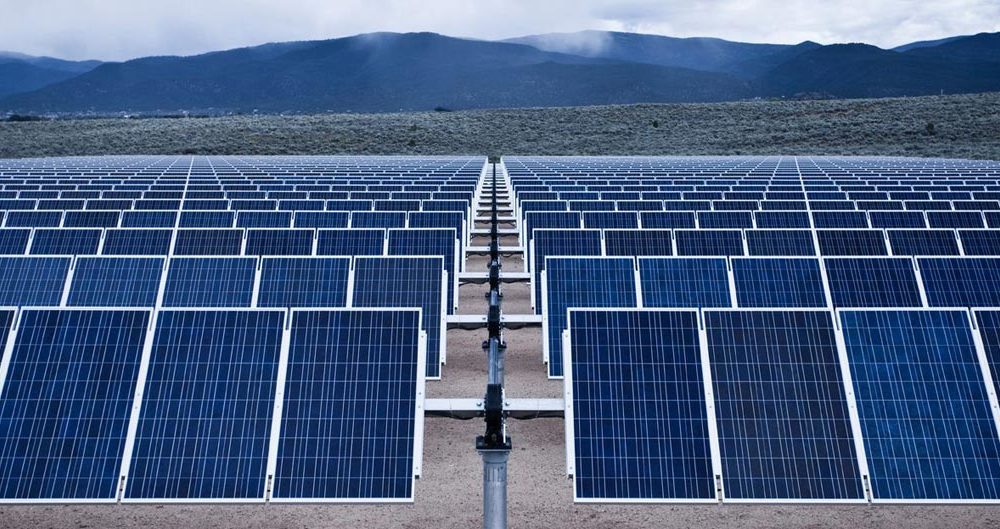Is blue the new black?
By EPR Magazine Editorial September 8, 2017 6:28 pm IST
By EPR Magazine Editorial September 8, 2017 6:28 pm IST

Though solar is considered as ‘sunshine’ sector in India, domestic solar equipment manufacturers are facing financial collapse due to cheap imports. So can we say ‘blue’ is the new ‘black’?’’
The domestic solar cell and equipment manufacturing industry is being hit due to imports from China, Malaysia and Taiwan. Reports reveal that more than 80 per cent of the current market share has been held by dumped imports.
A very difficult game
According to Pratik Deshmukh, Director, Deshmukh Group, “Bargained imports and the prevailing tax structure in India are making it increasingly attractive for solar equipment manufacturers to choose imports over manufacturing the parts themselves, which could hurt not only government’s Make in India mission but overall renewable viability pursuit.
They have over-capacity.”
He further observes, “It is going to be a very difficult game for India to sustain if they want to be competitive in manufacturing in such an over-supply scenario. Therefore domestic solar equipment manufacturers have not able to cash in on the opportunity of rising solar power installations.”
Low cost Vs. High quality
The Indian Solar Manufacturers’ Association (ISMA) has asked for safeguard and anti-dumping duties. Safeguard levies seek to protect the local industry against sudden import surges. Anti-dumping duties are imposed when overseas exporters are seen to be selling products below fair market value.
One of the mainstays of the importer strategy of following a mass production and mass consumption formula is to keep profit margin low and cover the gap by the subsequent boost in sales. According to Deshmukh, this has been practiced with negligence in the quality.
However, he observes, one has to understand that only cheap labours are not the reason why imported product rates are low. There are other vital aspects. For example, Chinese government imposes few health and safety or environmental regulation. Ironically, lesser concern for the environmental protection law is followed in production of sustainable solar goods.
Deshmukh explains that there are two reasons why dramatically superior technologies likely
will not emerge if the solar industry keeps its source as China:
In the solar supply chain, there are modules, inverters, structures, cables, combiner boxes, monitoring, and sensors. Out of these, according to Guru Inder Mohan Singh, COO, Amplus Energy, “Modules, inverters and sensors are majorly imported. Imported inverters and sensors are technically advanced and hence have logic. This leaves modules and which must be the topic of your question.”
Singh opines, “Modules are primarily imported from China apparently due to the price advantage but in reality, also due to superior quality. Module quality is broadly driven by the bill of material (BOM) i.e. the components that go into the module, cell, backsheet, glass etc; and the manufacturing process.”
The competitive edge
Chinese factories have highly automated lines as against most of the Indian manufacturers who have semi-automated assembly lines, Singh acknowledges. He adds, “The latter leaves part process prone to human error and hence the reduced quality. Also, due to the massive scale of factories in China, they can spend more on quality testing, certification, ERP and other processes that ensure consistency.”
For a developer, who is not doing a less important job for the country, even in the singular term of building a green economy, both price and quality matters. Discussing the advantages of opting for Chinese modules over the domestic ones, Singh said, “If we check the latest module price data, specifically of QE June this year and the current quarter, we’d come to know that Chinese modules are not being imported at dumping prices.”
Need assurance of demand
The real solution for the problem lies in the scale and cost of production of solar modules in India. “If the government can provide certainty of demand for next 5 years to the manufacturers, enough investment will flow into the sector and we will be able to see larger factories with new machinery, which can then compare well with Chinese imports in terms of both quality and price,” Singh suggests.
We use cookies to personalize your experience. By continuing to visit this website you agree to our Terms & Conditions, Privacy Policy and Cookie Policy.